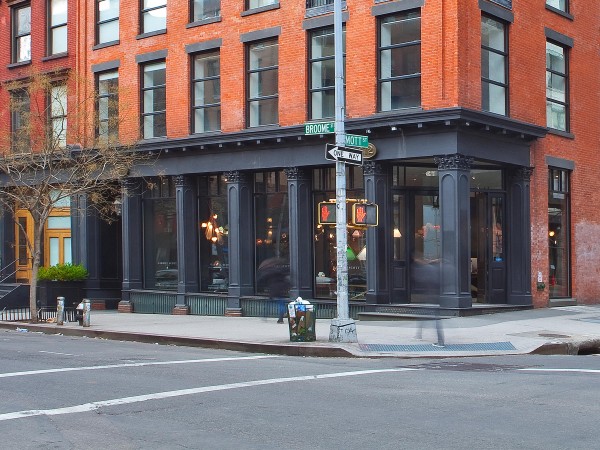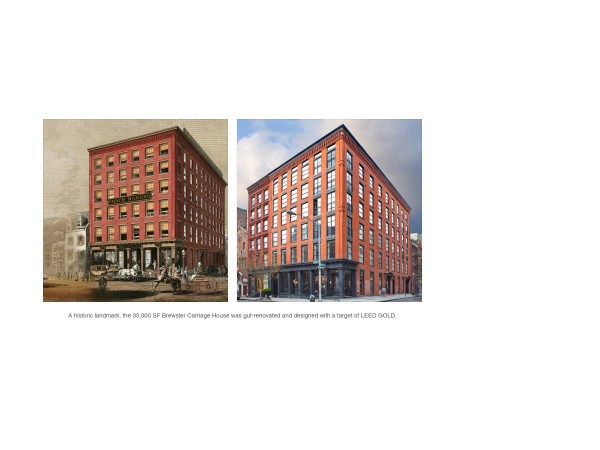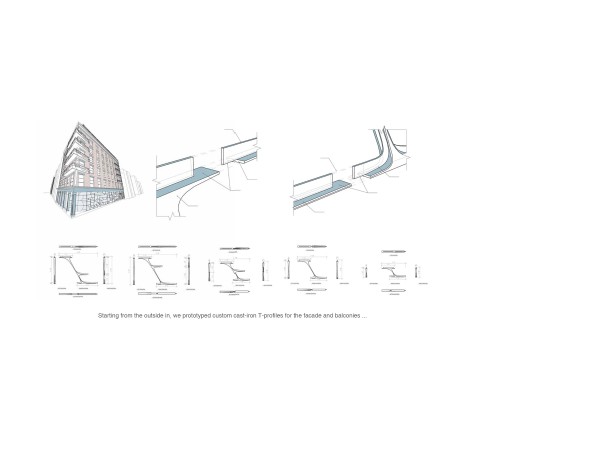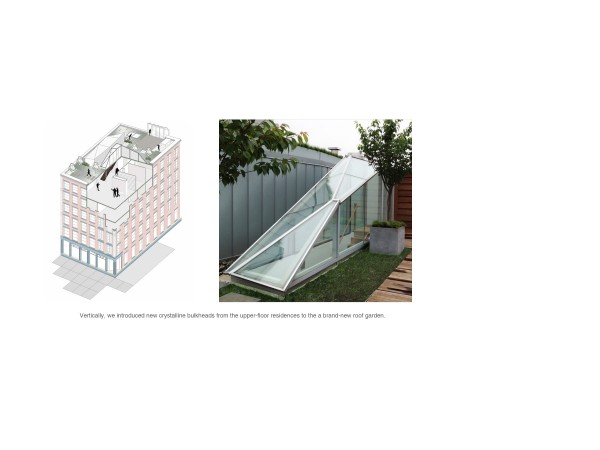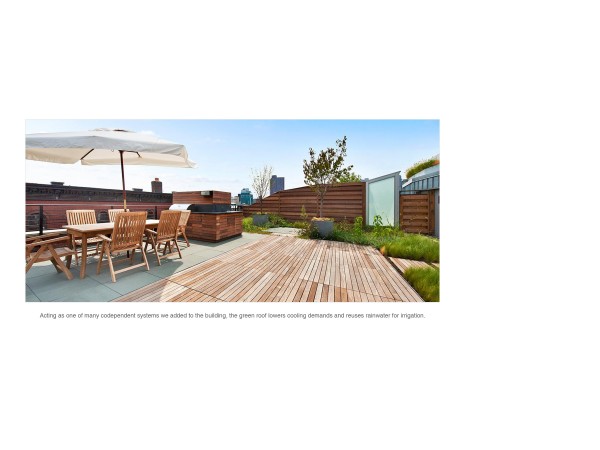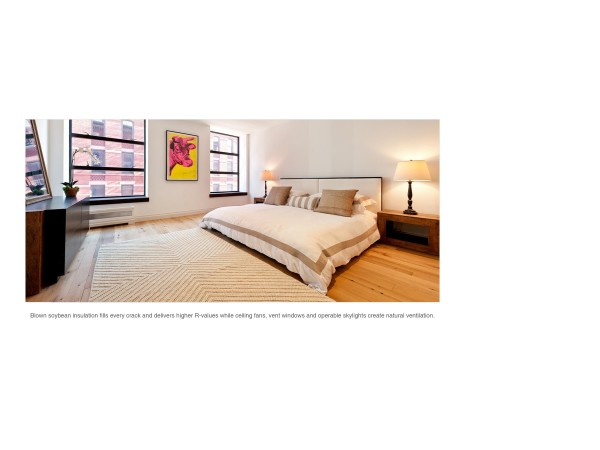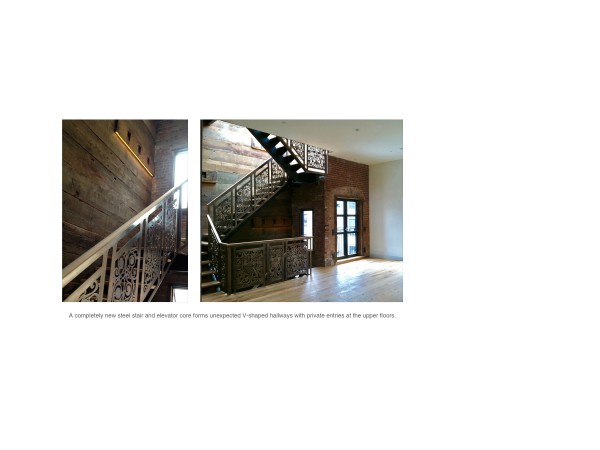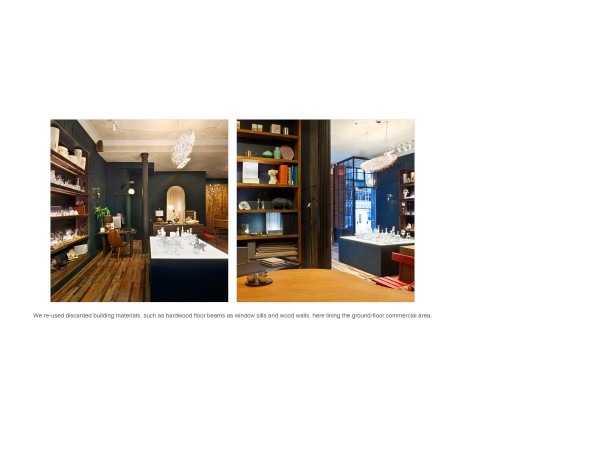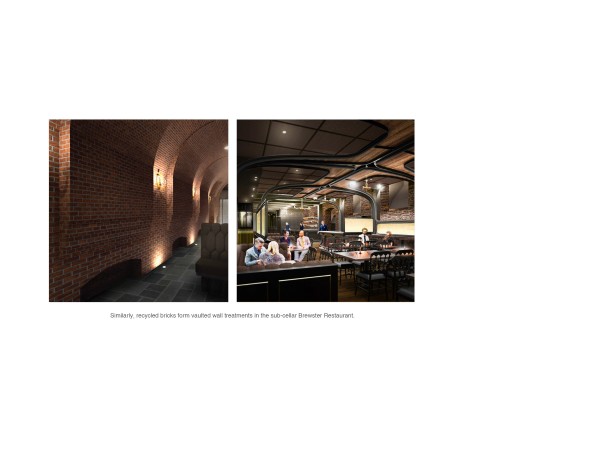The Brewster Carriage House, Little Italy, NYC // 6 stories, 33,000 SF. // Mixed use: commercial and condominiums
HISTORY: This former factory building, THE Brewster & Co. carriage factory, is located in the heart of New York’s Little Italy. James Brewster established the company in 1810 and quickly gained a reputation for producing the best carriages in the country. Brewster operated the factory for approximately 130 years and maintained track of each customer's family crest and color. The Vanderbilts' was a shade of maroon, the Astors' with a shade of blue, J. P. Morgan's was a shade of dark green.
The Brewster building’s renovation was a first in reaching LEED Gold. Originally a derelict factory, it’s gut-renovation created lofts on the upper- and art galleries on the ground floor, and a high-end restaurant was planned for the brick arched basement level. The building was meticulously renovated, its spectacular brick vaults completely rebuilt and brass signs, glass vault lights, the sidewalk prisms, were all reproduced in the original manner, to restore the former glory of the building. Defunct wood beams no longer able to carry residential loads, were upcycled for window sills and wall surfaces.
Inside however healthy living and sustainability were the norm: new solar vacuum tubes were installed on the roof, producing both electricity and heat. Instead of toxic fiberglass insulation denim insulation made from recycled jeans denim was used in the walls. The roofs were better insulated by installing green roofs reducing the buildings energy use.
The green roofs are known to retain water as it is stored by the substrate and then taken up by the plants and returned to the atmosphere through transpiration and evaporation, while reducing stormwater run-off. The Heat Island Effect is reduced; plants on vertical and horizontal surfaces are able to cool the cities’ heat island effect [UHI] during hot summer months while also reducing smog and dust particles.
This now completely rebuilt amazing city monument, not only is meticulously restored but also integrates modern efficient urban living with amazing outdoor green areas. A cultural aspect is added by the new art galleries and design stores on the ground floor and the Brewster Restaurant on the lower level with its nouveau cuisine.
